Images
7. Náray‘s Lyra coelestis
 |
8. Dedication page of Lyra coelestis
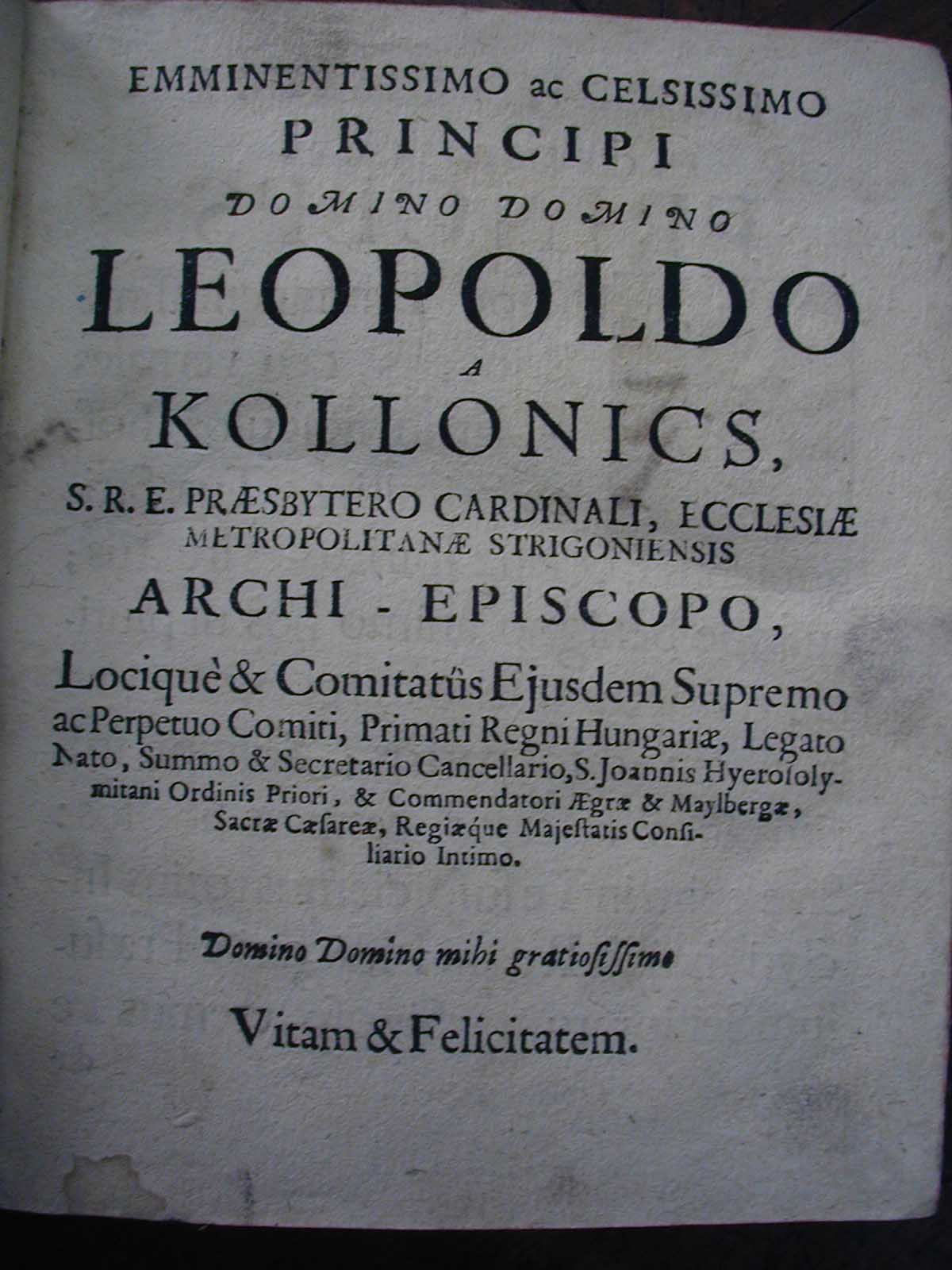 |
The image is from Georgius (György) Náray's Lyra coelestis Svavi Concordia Divinas Laudes personans. (1695). Náray was a
canon in Esztergom and collected Hungarian language hymns and songs, some of which were already hundreds of years old when he compiled them. The book was dedicated to Leopold Cardinal Kollonics
who was instrumental in the development of Hungarian Catholic education in the 17th and 18th centuries.
It was published by the Jesuit press at the university in Trnava (Nagyszombat), but was probably printed only once. Today no copies are to be found in any major European or North American library,
although a copy was formerly in the collection at Oradea, Romania. This copy appears courtesy of the Subotica City Library.
The work played a significant part in the development of Hungarian church music,
along with Cantus Catholici of Ferenc Lénárt Szegedi (Bishop of Eger, 1674) and Calvinist psalm melodies (István Illyés, Soltári Énekek, 1693).
See:
http://mek.oszk.hu/02100/02172/html/4.html
(Continued below)
Return to Table of Contents |
9. Morning songs from Náray‘s Lyra coelestis
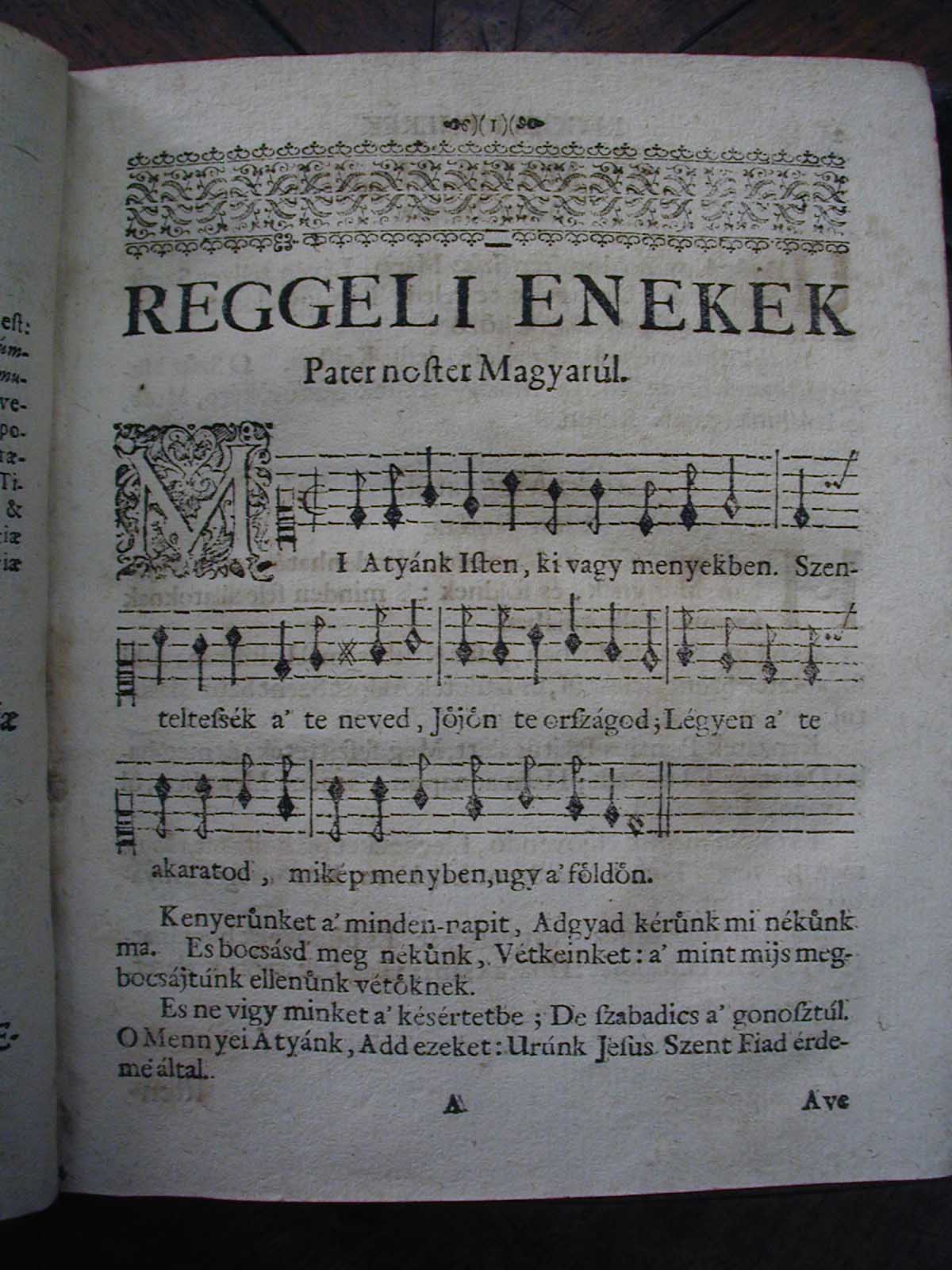 |
10. Morning songs from Lyra coelestis
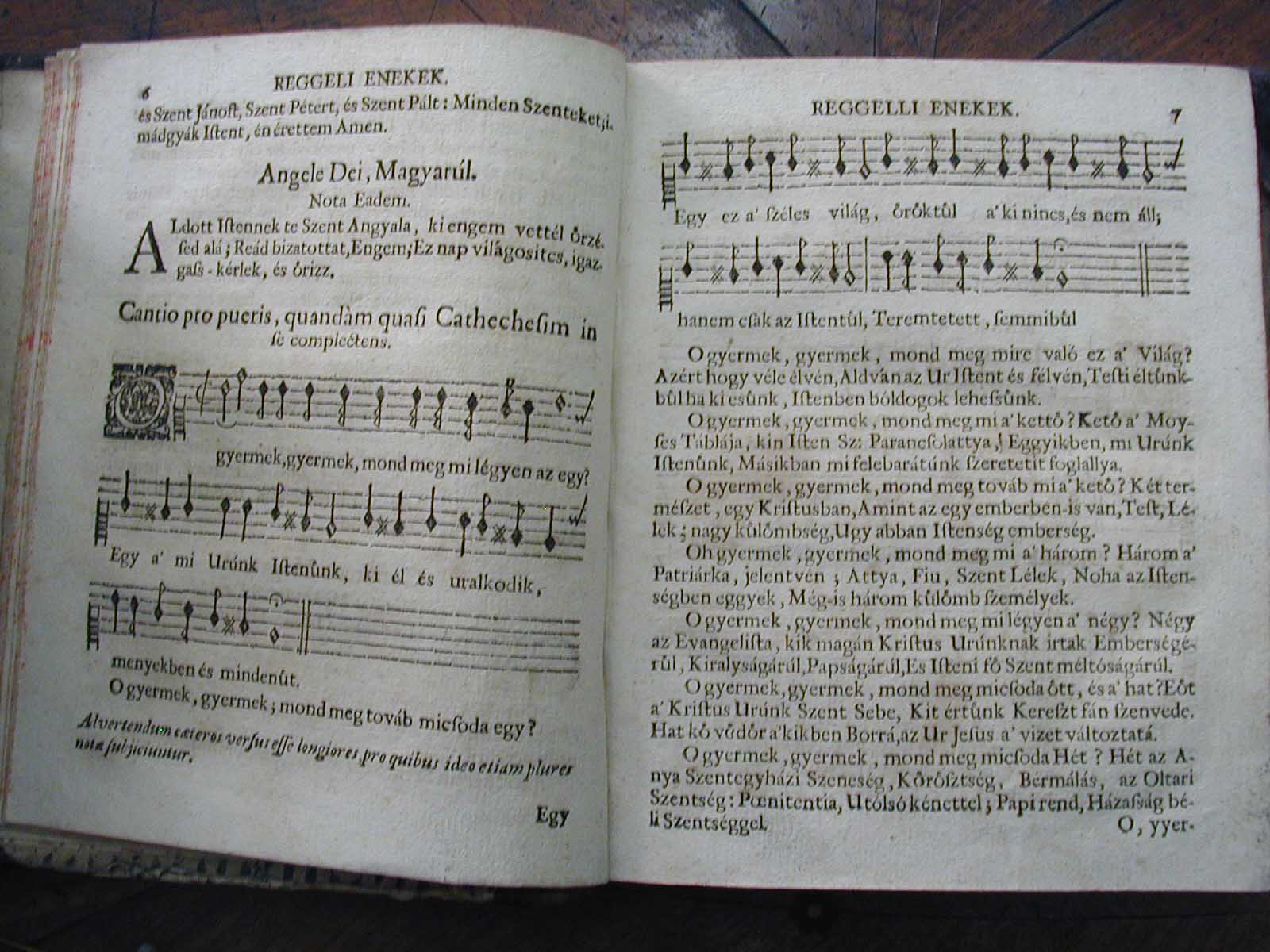 |
The morning songs start with the Lord's Prayer. The left hand image is entitled "Pater noster in Hungarian"
and the right hand image "Angele Dei in Hungarian". The introductory text in the right hand image says "You holy angel of the blessed God, who has taken
me under your guardianship and who has been entrusted to your care, illuminate me this day, direct me, I beseech you, and guard me."
(Continued below)
Return to Table of Contents |
11. Cantus de nativitate Christi from Náray‘s Lyra coelestis
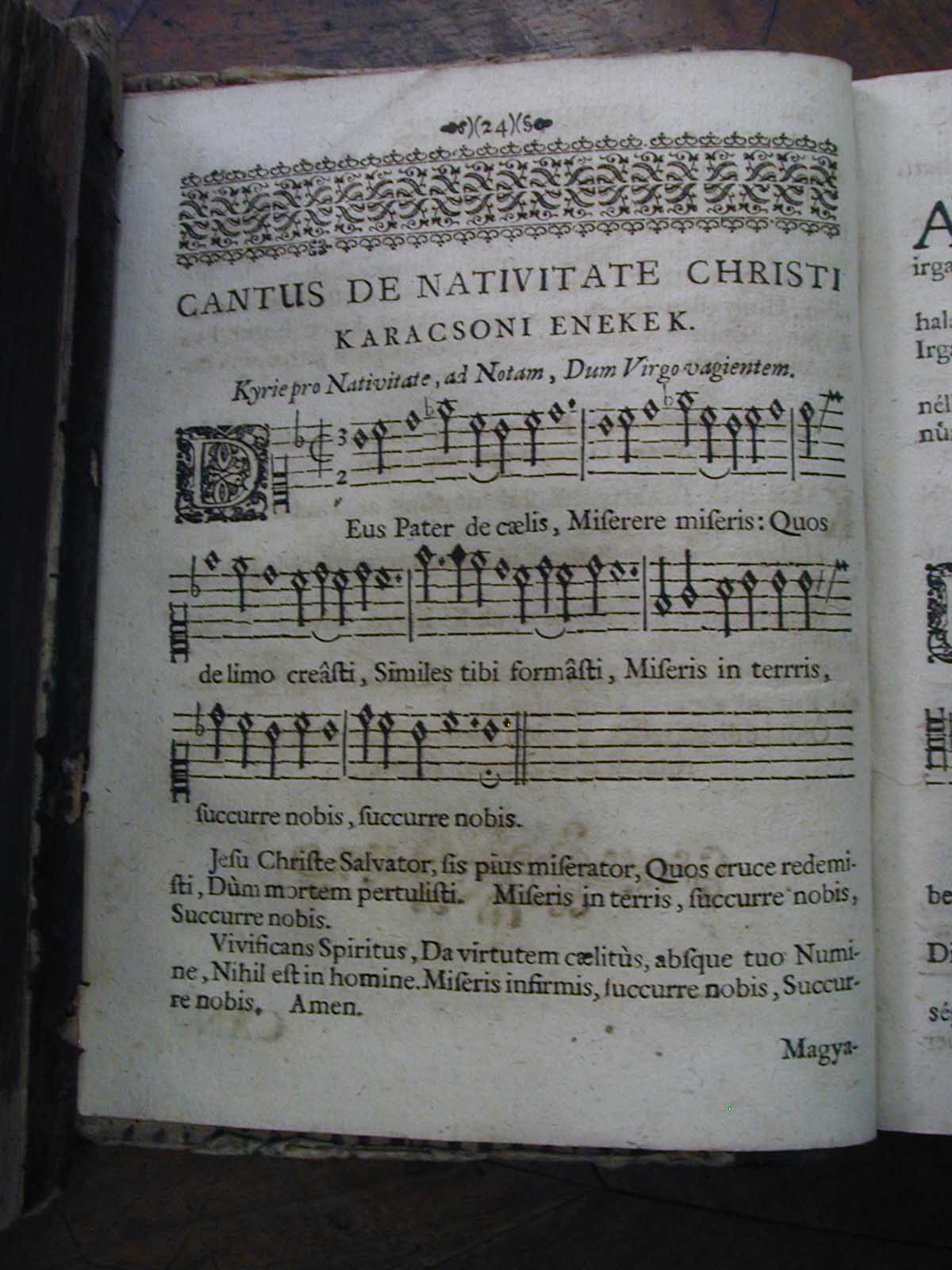 |
12. Credo from Lyra coelestis
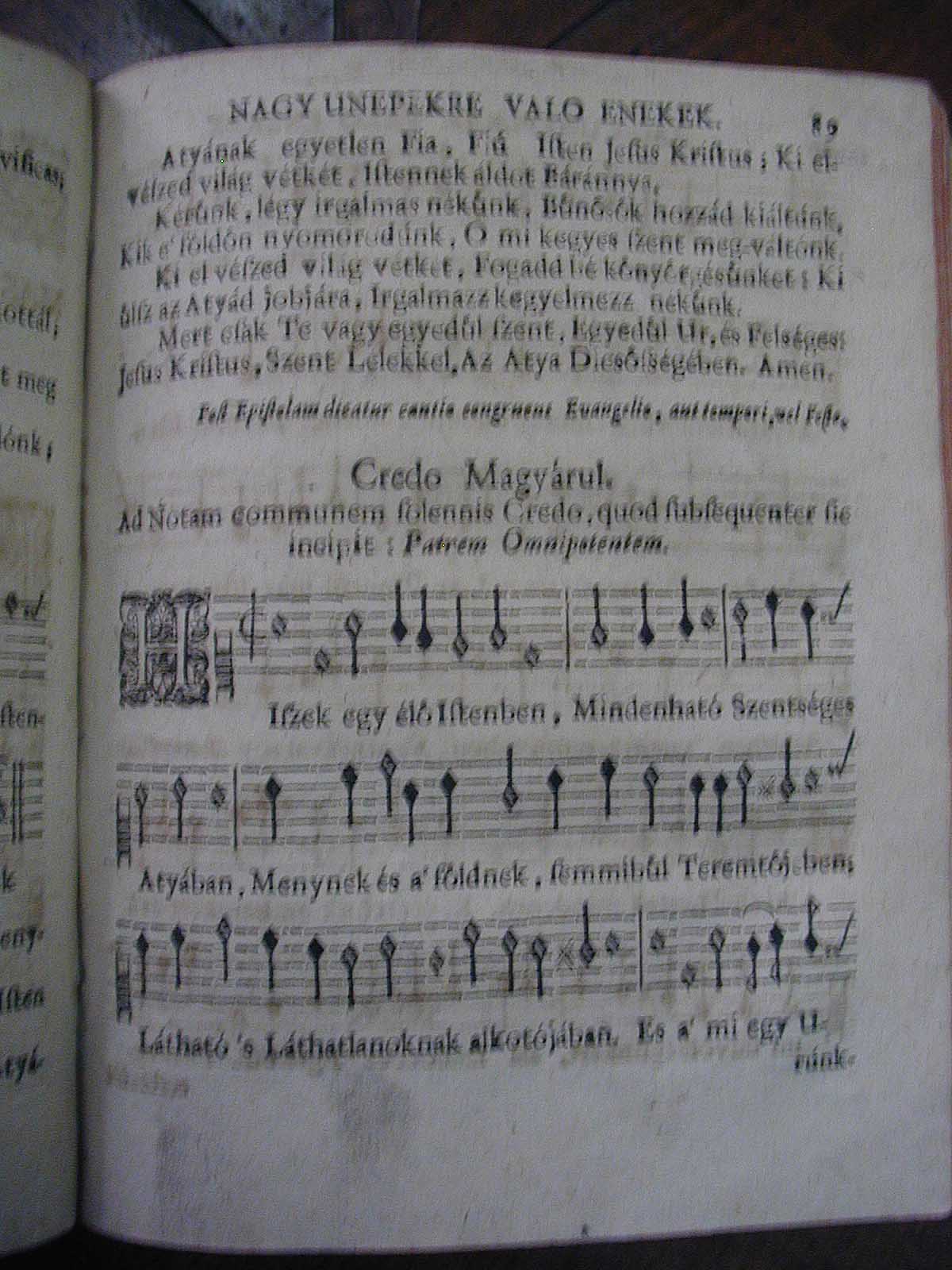 |
In the right hand image, the running head is “Songs for High Holy Days”
Náray's work takes its place along with other compilations of 17th century Hungarian music; to wit the Cantionale Catholicum and the
Codex Kájoni compiled by John Kájoni, a Franciscan monk (1630-87) and the Codex Vietorisz (around 1680) by unknown authors. The former contains both secular and church music.
See
more details here, and see
songs from the Codexes here.
Return to Table of Contents |
13. Songs for High Holy Days, the Credo continued, Lyra coelestis
 |
Frame intentionally left blank |
Return to Table of Contents |






